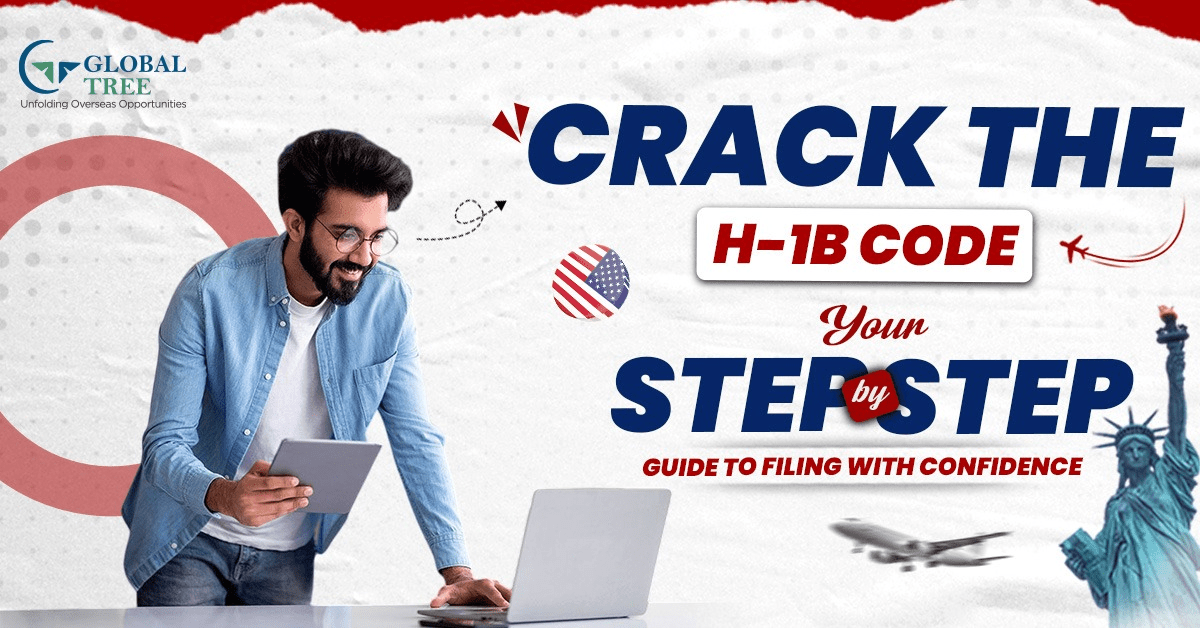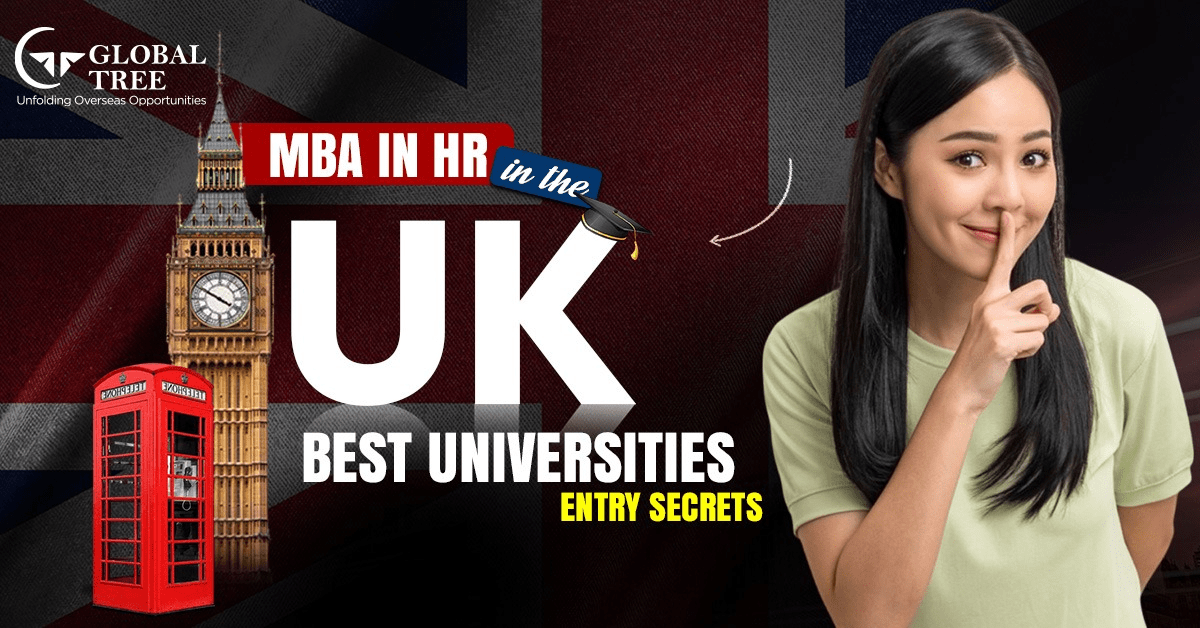✅ H-1B Visa Explained: Petition Process, Eligibility & Tips

Introduction
The H-1B visa category is an integral part of the US immigration system; it is the principal work visa for employing skilled foreign workers. Many areas of the economy, including technology, finance, and research, have become reliant on foreign workers in positions that require specialized skills. Therefore, employers and foreign workers need to understand the H-1B visa process. This guide will simplify the complex and lengthy H-1B visa category, its eligibility requirements, and the petition process, with the intention of helping potential international-level professionals work in the United States.
What Is the H-1B Visa?
The H-1B Visa is a US work visa for employers to hire foreign professionals with specialized skills and a higher education in specialized working fields, such as technology, finance, engineering, and healthcare. It usually lasts for three years and can be extended for a total of six years, often to give employees permanent residency to work in the US on a long-term basis. It is designed for jobs that require at least a bachelor's degree or equivalent experience. Overall, the H-1B visa is still one of the most desirable types of visas for USA highly regarded talent from around the world.
In 2025, the H-1B process became much fairer and transparent. The new registration system, which also focuses on individual applicants instead of an employer to prevent duplicate entries, improved selection fairness by using the name of the applicant. The US government also added a merit-based system that favored the applicants who had higher wages and advanced degrees based on experience. In addition to these changes to the H-1B visa, there have also been stricter application compliance rules to protect workers and to ensure that employers are following wage laws. This made the H-1B visa more efficient and credible for workers, employers, and the US immigration.
Eligibility Criteria for an H-1B Visa
Before you can file for an H-1B Visa, both you as the employer and the foreign worker must fulfill specific eligibility criteria as outlined by the United States Citizenship and Immigration Services ("USCIS"). These criteria ensure that the job truly requires specialized skills, along with the related qualifications of the applicant. The following clarifies the breakdown requirement clearly:
1. Job Must Be A Specialty Occupation
The job offered to the H-1B applicant must require theoretical or technical expertise in a specific specialty occupation, such as (to name a few) information technology (IT), finance, engineering, architecture, healthcare, or science. Specialty occupations must generally require at least a bachelor's degree.
2. Applicant Must Have the Required Qualifications to Perform the Job Duties
A minimum of a bachelors degree in the USA, or its international equivalent, is required for foreign workers, although three years of related work experience may substitute for each year of missing education.
3. Job Offer Must Come From a Valid US Employer
A bona fide employer from the US must sponsor the H-1B applicant by submitting Form I-129 and extending a valid job offer, with the position covered by a formal employment agreement. You are unable to self-sponsor as the employer.
4. Labor Condition Application (LCA) Approval
Before submitting the H-1B petition, the employer must first secure an approved LCA from the US Department of Labor (DOL), which ensures that the employer will pay the appropriate wage and that the working conditions are fair.
5. Proof of Employer-Employee Relationship
The petitioner must demonstrate that an actual employer-employee relationship exists, which means that the business will have power and authority over the work that the person does, compensation, and the overall terms of employment while in the visa status.
6. Specialty Occupation Wage Requirements
The salary being offered to the worker must equal or be more than the current, prevailing wage level for that specialty occupation and geographic area to ensure fairness and compliance with labor standards.
7. The Applicant Must Be Eligible for Entry into the US
The applicant must be able to pass a background check, have a valid passport, and not have a record of overstaying or violating any visa status or any criminal activity.
8. Cap and Lottery Selection (If Applicable)
Most H-1B petitions are subject to a yearly cap of 85,000 total visas (65,000 regular + 20,000 available to applicants with a master's degree). Unless exempt (for independent university employment or a research institution), applicants must register for an annual lottery to apply.
H-1B Visa Categories
In 2025, the US Citizenship and Immigration Services (USCIS)** continues to categorize the H-1B visa into three distinct tiers**, which were established to fulfill different employment and skill needs for foreign professionals seeking employment in the US. The overall function of the H-1B remains the same: it allows US employers to employ foreign workers in highly specialized fields. However, with the new regulations came distinctions amongst employment-based applications and a fairer selection process. USCIS included all employment categories in the regulation without specifying additional work categories as before.
Here are the main H-1B visa categories in 2025:
1. H-1B Regular Cap Category
USCIS allocates 65k visas total annually in this category, occupationally, for foreign workers qualifying for a professional position. A skilled position requires at least a bachelor's degree or what USCIS deems as the equivalent. Applicants are selected from the USCIS lottery type system; however, changes have been made to select individuals from the identifiers, rather than employers submitting "one" individual's name multiple times, to mitigate fraud and duplicate entries.
2. H-1B Master's Cap (Advanced Degree Exemption):
20k total annual visas are allocated for candidates with a notation of a US master's degree or higher. Applicants get a two-bite-of-the-apple lottery chance. A candidate can be selected in the first round under the advanced degree cap. If not selected, the second chance comes in the lottery from the regular cap after that round has exhausted the advanced degree applicants.
3. H-1B Cap-Exempt Category
Some employers are exempt from the annual lottery cap, allowing them to file H-1B petitions at any time of the year. This includes:
- Universities and nonprofit educational institutions
- Nonprofit research organizations
- Government research institutions
Cap-exempt H-1B petitions are ideal for professionals in academia, science, and research fields.
4. H-1B Transfer/Portability Category.
Individuals holding an H-1B visa are permitted to transfer to a new employer and continue as an H-1B holder. The new employer must submit a new petition, but the individual is authorized to begin working immediately following the filing of the petition pursuant to the portability rule established by USCIS.
[Read More: Indian Professionals in the USA Meet Congressional Leaders for Green Card Reform]
5. H-1B Extension/Renewal Category.
Individuals holding an H-1B visa are permitted to remain in the US and extend their status beyond the initial three years for a total maximum of six years, and in certain situations, beyond six years, if the individual is preparing to file a green card application (through the PERM or I-140 processes).
6. H-1B Dependent Employers Category.
Employers that employ at least 15% of H-1B workers. Beginning in 2025, employers with this percentage of H-1B workers will face scrutiny regarding their recruiting practices and the requirement to pay the employees at the appropriate wage levels.
7. H-1B1 and E-3 Related Categories (Special Agreements)
While not strictly under the H-1B quota, related categories include:
- H-1B1 Visa for citizens of Chile and Singapore (6,800 slots annually).
- E-3 Visa for Australian professionals, offering similar benefits to H-1B but with faster processing and lower costs.
The 2025 reforms of the H-1B program focus on individual-based registration, increased transparency, and merit-based selection, providing actual skilled professionals with a better opportunity. High-wage and high-skilled occupations are prioritized, and the reforms reflect the US economic goals and the needs of the workforce.
The 2025 H-1B visa categories reflect a more structured, transparent, and talent-centered approach. The bottom line with either the petitions in the general cap, master's cap, or cap-exempt routes is to create eligibility, document accurately, and register on time—all helping set up for a successful H-1B experience in the United States.
H-1B Petition Process Step-by-Step
Obtaining approval for an H-1B can be much simpler once you follow the steps in order. Below is the comprehensive timeline, from job offer to beginning work, that is appropriate for the employer and the fellow worker.
1) Agree on the basics and choose a path
Make sure the position is a specialty occupation, the employer is a US entity, and the employee has the required degree or equivalent. Decide if the petition will be a cap subject or a cap exempt. Note, for 2025: the registration is beneficiary-centric, has one entry for each person, no matter how many employers you have.
2) Worksite and wage details
Find out the locations of work, determine the correct SOC code, and confirm the level of prevailing wage. Assemble a detailed job description that describes the duties, specialized duties, and the field of study required.
[Learn More: Love Has No Borders Discover the K1 Fiancé Visa Journey]
3) Labor Condition Application
The employer files ETA-9035 LCA with the Department of Labor attesting to wages and working conditions, posts notices, and hands over the public access file. The LCA approval generally takes a few days.
4) Register for the H-1B lottery, if cap subject
In March, the employer sets up a USCIS online account and registers the beneficiary. If selected, USCIS will send a selection notice that provides the filing window.
5) Develop the petition
File Form I-129 with the H supplement and the H-1B data collection form, along with several checks for all fees, a signed LCA, a support letter, a detailed job description, organizational evidence of employer status, and proof of the beneficiary's credentials. The beneficiary's credentials will typically include degrees, transcripts, a formal credential evaluation if obtained from a foreign institution, letters of experience, and licenses if required.
6) Pay the correct fees.
The typical fees will include the filing fee, the ACWIA training fee, the fraud fee, and any Asylum Program fee—if applicable. Premium processing using I-907 is optional.
7) File with the correct USCIS service center
For cap cases, submit the package by courier within the selection filing window; otherwise, if/when cap exempt, you can submit at any time. Retain complete copies of everything.
8) Respond to USCIS interventions
USCIS will provide a receipt notice. If you get an RFE, be sure to respond completely, on time, and provide targeted evidence on specialty occupation, employer-employee control, right to control at third-party sites of employment, and wage compliance.
9) Receive approval and next steps
You will receive Form I-797 when approved. If you requested a change of status and were granted one, the new status becomes effective on the requested effective date (typically October 1 for cap cases). If you asked for consular processing, go to the visa interview with the DS-160 and the approval notice.
10) Consular visa and entry if processing abroad
Complete the DS-160, attend the interview, and get your H-1B visa stamp. You may enter the US no earlier than 10 days before the start date on the approval notice.
11) Start and complete onboarding
On or after the start date, you must complete the Form I-9, verify your status, and employment can begin. Keep copies of your approval notice, LCA posting proofs, and wage records.
12) Maintain compliance and plan ahead
Keep the public access file current, pay the required wage even during nonproductive periods, amend for material job changes, and track max out toward six years and green card timelines. Use portability to move employers by filing a new petition and starting after the latest filing is received.
- Dependents: Spouses and unmarried children under 21 may apply for H-4. Some H-4 spouses qualify for work authorization.
- Cap-gap tip: F-1 students on OPT can bridge to H-1B if a timely cap petition with a change of status is filed and selected.
[Explore More: You Won’t Believe How Easy It Is to Study in the USA in 2025]
Required Documents for an H-1B Visa (2025 Guide)
Prior to submitting an H-1B Visa application, an employer and foreign worker need to gather a handful of documents. Having correct and complete documents is extremely important because omitting information can cause your application to be delayed or an outright denial. Below is a simple explanation of what you will need to apply for the H-1B in 2025, written in a friendly conversational style.
1. From the US Employer (Petitioner):
- Form I-129 (Petition for Nonimmigrant Worker) – The main form filed with USCIS.
- Labor Condition Application (LCA) – Approved by the US Department of Labor, confirming fair wages and work conditions.
- Employment Offer Letter – States job title, salary, job duties, and duration of employment.
- Company Profile and Tax Documents – Proof that the employer is a legitimate US business.
- Detailed Job Description – Demonstrates that the role qualifies as a "specialty occupation."
- Organizational Chart (if applicable) – To show where the H-1B worker fits in the company.
2. From the Foreign Worker (Beneficiary):
- Valid Passport – Must be valid for at least six months beyond the intended stay.
- Educational Degrees and Transcripts – Proof of a bachelor's or higher degree (US or equivalent foreign qualification).
- Credential Evaluation Report – Required if the degree was earned outside the US.
- Professional Experience Letters – From previous employers verifying relevant work experience.
- Current Resume or CV – Up-to-date and aligned with the job role.
- Professional Licenses (if applicable) – For fields like engineering, law, or medicine.
- Passport-Sized Photos – Two recent photos meeting US visa standards.
3. Supporting Evidence for the H-1B Petition:
- Proof of Specialty Occupation – Documents or expert opinions showing the position requires specialized knowledge.
- Proof of Employer-Employee Relationship – Significant for consulting or third-party placements.
- Filing Fee Receipts – Including H-1B filing, ACWIA training, and fraud prevention fees.
- Copy of Form I-797 (if transferring or extending)—proof of previous H-1B approval.
4. For Consular Processing (Visa Stamping):
- Form DS-160 Confirmation Page – Online visa application form.
- Visa Appointment Confirmation – Scheduled interview date at the US Embassy or Consulate.
- Original I-797 Approval Notice – Received after USCIS approval.
- Visa Application Fee Receipt – Proof of payment before the interview.
Conclusion
The H-1B visa continues to be one of the most popular options for skilled professionals who wish to work in the United States. It is essential to understand the visa categories and the petition process to be successful. No matter if you are applying for H-1B under the regular cap, master's cap, or a cap-exempt category, getting clarity on where you fall along the process will also streamline your path from job offer to approved petition. The petition process may seem overwhelming to you at first, from obtaining a Labor Condition Application (LCA) to filing Form I-129 to the collection of supporting evidence, but it is entirely manageable with documentation one step at a time. As of 2025, the H-1B revised system has resulted in a more transparent process focused on individual-based registration and merit selection benefits for true-skilled applicants.
To be successful in obtaining an H-1B visa, organization, accuracy, and timing are essential. With a qualified employer and sufficient qualifications to support your petition, you can make your dream of living and working legally in the United States a reality!
Frequently Asked Questions
1. What is the H-1B visa category?
The H-1B visa is a U.S. non-immigrant work visa that allows employers to hire foreign professionals in specialty occupations. These roles typically require a bachelor’s degree or higher in a specific field like technology, finance, or healthcare. It’s one of the most common routes for skilled professionals to work in the U.S. legally.
2. Who is eligible to apply for an H-1B visa?
Applicants must hold at least a bachelor’s degree (or equivalent experience) related to the job. The U.S. employer must also prove that the role requires specialized skills not easily found in the domestic workforce. Common fields include engineering, IT, mathematics, medicine, and architecture.
3. How does the H-1B visa petition process work in 2025?
The process begins with an employer registration under the H-1B cap lottery, typically held in March. Selected employers then file a full Form I-129 petition with USCIS. Once approved, the applicant can schedule a visa interview at the U.S. Embassy or Consulate in their country.
4. What are the key dates for the 2025 H-1B application process?
For 2025, employer registrations are expected to open in March, with lottery results released by April. Petition filing occurs soon after, and employment typically begins in October 2025. Applicants are encouraged to prepare documents and employer details well in advance.
5. What documents are needed for the H-1B visa petition?
Essential documents include the job offer letter, educational credentials, passport, Labor Condition Application (LCA), and Form I-129. Employers must also include proof of the company’s legitimacy and job details. Complete documentation ensures faster processing and reduces the risk of Requests for Evidence (RFEs).
6. What is the H-1B visa cap for 2025?
The annual cap remains at 85,000 visas, including 65,000 for general applicants and 20,000 for those with U.S. master’s or higher degrees. Demand typically exceeds supply, leading to the electronic lottery system determining selections. Advanced degree holders have slightly higher odds of selection.
7. How long is the H-1B visa valid for?
The visa is initially granted for three years and can be extended up to six years in total. In certain cases, such as pending green card applications, extensions beyond six years may be permitted. Afterward, many professionals transition to permanent residency.
8. What is the Labor Condition Application (LCA) and why is it important?
The LCA is a certification from the U.S. Department of Labor confirming that the employer will pay fair wages and meet working condition standards. It ensures that hiring foreign professionals doesn’t negatively affect U.S. workers. The LCA must be approved before filing Form I-129.
9. Can H-1B holders change employers in the U.S.?
Yes, H-1B workers can transfer their visa to a new employer through an H-1B transfer petition. The new employer must file Form I-129 before the employee starts working. This allows flexibility without leaving the country or entering a new lottery.
10. What are the main reasons H-1B petitions get rejected?
Common reasons include incomplete documentation, insufficient evidence of job specialization, or employer non-compliance with LCA requirements. Some petitions are denied due to inconsistencies in salary or job descriptions. Attention to detail and working with experienced HR or legal teams reduces these risks.
11. What are the fees involved in the H-1B petition process?
The total cost ranges between $1,700 and $6,000, depending on company size and attorney fees. The employer typically covers most filing costs, including registration and fraud prevention fees. Additional costs may apply for premium processing or dependents.
12. What is Premium Processing and how does it help?
Premium Processing is an optional USCIS service allowing employers to receive petition decisions within 15 calendar days. It costs an additional $2,805 and speeds up approval timelines. Many employers use this option to meet urgent project or relocation deadlines.
13. Can H-1B visa holders bring their family to the U.S.?
Yes, dependents can join under the H-4 visa category. Spouses can apply for work authorization (EAD) if the H-1B holder has an approved Green Card application in progress. Children under 21 can attend U.S. schools or universities.
14. What happens if the H-1B worker loses their job?
If employment ends, the visa holder has a 60-day grace period to find a new employer or change visa status. Failing to act within that period may require leaving the U.S. quickly. Maintaining valid status and backup options is crucial.
15. How can an H-1B visa holder transition to a Green Card?
Many employers sponsor H-1B holders for permanent residency through the EB-2 or EB-3 Green Card process. This involves PERM labor certification, I-140 petition, and adjustment of status. It’s a common pathway for skilled professionals seeking long-term residence in the U.S.





